Marc Weidenbaum's Blog, page 11
August 9, 2025
Scratch Pad: 808, Holidays, Manga
At the end of each week, I usually collate a lightly edited collection of recent comments I’ve made on social media, which I think of as my public scratch pad. I find knowing I’ll revisit my posts to be a positive and mellowing influence on my social media activity. I mostly hang out on Mastodon (at post.lurk.org/@disquiet), and I’m also trying out a few others. And I generally take weekends off social media.
▰ Stoked for the dub version of the Outside Lands Festival. That’s what it sounds like when you live a few blocks away.
▰ August 7 is (along with April 13) like Christmas Eve for a certain subset of electronic music fans
▰ Whew, just under 7,860 posts on disquiet.com in the past (just under) 29 years (site anniversary in mid-December)
▰ Wishing a happy 808 Day to all who celebrate
▰ I’m not clumsy. I simply have inapproprioception.
▰ Best sounds of Outside Lands: (1) layers of honking from passing cars, (2) people cursing that a nearby porta potty is for a construction site not for attendees, (3) keeping track of slang, which gets more slurred as the day goes on
▰ I was on a short vacation last (extended) weekend for my birthday and then under the weather much of this week, so I read a lot more than usual, and in particular a lot more comics/manga than usual. I read the first seven tankobon volumes of Satuski Yoshino’s Barakamon, about a fairly young (early 20s) calligrapher who leaves Tokyo for a rural island in order to find his own writing style. It’s a great example of why I think of much standard manga as “paper television.” This series is, essentially, a highly addictive, binge-able, fish-out-of-water comedy, capably and affectionately drawn and expertly paced. I wish there was more calligraphy in the story, but what calligraphy there is is pretty interesting. There are another dozen volumes of Barakamon, and a seven-book prequel, too. We’ll see if I get around to them. ▰ I read the standalone collection Rakuda Laughs, by Satuski Yoshino, about a hyperviolent and hypersexual yakuza. It’s over the top, but there are panels of city scenes that are so beautiful it’s worth it. Rakuda Laughs includes an afterword by director Takashi Miike, which tells you how violent it is. ▰ I read the first volume of Tsutomu Nihei’s Tower Dungeon, which is like reading a video game, right down to the mention of “levels” as the fighters make their way to, yes, rescue a princess. With a little more self-consciousness, it would count as LitRPG. The illustrations, which are a little rough, at least in this first volume, reminded me of Norihiro Yagi’s Claymore a bit. The depictions of the built environment are, as in the Yoshino, worth the price of admission, but are also totally different. ▰ I read the complete, seven-volume collection of Inio Asano’s Goodnight Punpun, which is quite a strange read, moving from fairly straightforward teen melodrama to something exceedingly nihilistic, akin to Terrence Malick’s Badlands, or Oliver Stone’s Natural Born Killers. It uses so much photography as backgrounds (albeit treated, so as to look like line drawings) that it almost counts as fumetti. Also, and this is a key factor in its style: several characters, including the main one, are drawn like stick figures. ▰ I don’t know when we stopped calling Kazuo Umezu that and started calling him Kazuo Umezz, but in any case I read the first collection of his My Name Is Shingo, an old-fashioned sentient-robot story that feels a bit like classic Osamu Tezuka (and Umezz’s own The Drifting Classroom, which is a decade older), and I’ll be finishing the series for sure. ▰ I read the first two volumes of Ishino’s Mujina into the Deep (dystopian story about young assassins), and I’m excited for the third volume, which is due out by the end of the year, I think. ▰ And I read the first three volumes of Masakazu Ishiguro’s Heavenly Delusion, which is a near-future dystopian road story that jumps back and forth between some children with heightened abilities stuck in an enclosed scientific environment, and some older kids (also with powers) wandering a post-apocalyptic Japan. I’ll continue to read this series, and explore some of its author’s earlier work. (The art made me want to revisit Jeff Nicholson’s Ultra Klutz.) ▰ And I didn’t just read manga. I read two western graphic novels: Wolverine: Revenge by writer Jonathan Hickman and illustrator Greg Capullo, who may be my favorite superhero illustrator these days, now that Frank Quitely and Chris Bachalo aren’t doing that much (far as I can tell). ▰ Quitely did draw the first volume of Mark Millar’s The Ambassadors (each of its collected issues has a different artist), which I also read and enjoyed, though I’m kind of a sucker for getting-the-band-together story lines; what happens after they get together is often another story. (I just started Hickman’s Imperial, a new series from Marvel, but only the first issue is out on the Marvel Unlimited app, so it’s gonna be four or five months before I complete the first collection.) ▰ If this seems like a lot of pages of comics, it is. The Goodbye Punpun septet alone was 2,952 pages. Like I said, I’ve been a bit under the weather, and when I am — which fortunately isn’t that often — TV can give me a headache and novels and non-fiction can take more concentration than I’ve got. So, I read comics. One of the first things I learned when I started working at Viz, back in 2004, was how quickly kids read Shonen Jump and similar magazines. It’s like eating ramen quickly and while slurping: it’s how it’s done.
August 8, 2025
Musical & Environmental
I follow the work of the musician who goes by he_nu_ri pretty closely, and I was excited when this video popped up on YouTube. Not only does it feature Serge synthesizer modules (designs that go back to the early 1970s, though these specific devices are fairly new), but the musician described it as pushing the bounds of what previous releases might suggest: these are “more experimental and atonal experiments.” That said, it’s a delight, precise little sounds that seem to echo forever, like drops heard from a deep deep well. It is at once musical and environmental.
August 7, 2025
Disquiet Junto Project 0710: Let’s Get Loud
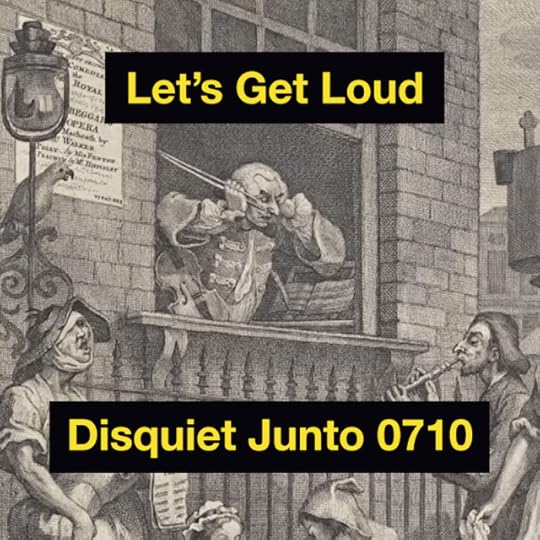
Each Thursday in the Disquiet Junto music community, a new compositional challenge is set before the group’s members, who then have five days to record and upload a track in response to the project instructions.
Membership in the Junto is open: just join and participate. (A SoundCloud account is helpful but not required.) There’s no pressure to do every project. The Junto is weekly so that you know it’s there, every Thursday through Monday, when your time and interest align.
Tracks are added to the SoundCloud playlist for the duration of the project. Additional (non-SoundCloud) tracks also generally appear in the lllllll.co discussion thread.
Disquiet Junto Project 0710: Let’s Get Loud
The Assignment: Make a piece of your own music louder/busier.
There is just one step in this project:
Choose a recent piece of your own music and rework it by making some portions of it significantly louder and busier than they were initially.
Tasks Upon Completion:
Label: Include “disquiet0710” (no spaces/quotes) in the name of your track.
Upload: Post your track to a public account (SoundCloud preferred but by no means required). It’s best to focus on one track, but if you post more than one, clarify which is the “main” rendition.
Share: Post your track and a description/explanation at https://llllllll.co/t/disquiet-junto-project-0710-lets-get-loud/
Discuss: Listen to and comment on the other tracks.
Additional Details:
Length: The length is up to you.
Deadline: Monday, August 11, 2025, 11:59pm (that is: just before midnight) wherever you are.
About: https://disquiet.com/junto/
Newsletter: https://juntoletter.disquiet.com/
License: It’s preferred (but not required) to set your track as downloadable and allowing for attributed remixing (i.e., an attribution Creative Commons license).
Please Include When Posting Your Track:
More on the 710th weekly Disquiet Junto project, Let’s Get Loud — The Assignment: Make a piece of your own music louder/busier — at https://disquiet.com/0710/.
August 6, 2025
The Art of Circuitry
Incredible circuit board illustrations, all full-page, from the first volume of Kazuo Umezz’s manga My Name Is Shingo (1982–1986). A fairly common aspect of manga is to, after pages of sometimes casual and spare drawing, to be suddenly hit with a page or spread of intense detail, like cityscapes or nature scenes. Here the eye focuses on the detail inside a machine — a machine that is, at times, the story’s narrator. I worked in manga for a half decade, and moments like these thrill me to this day.
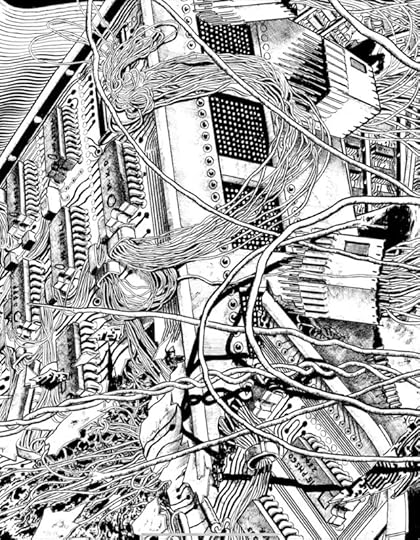
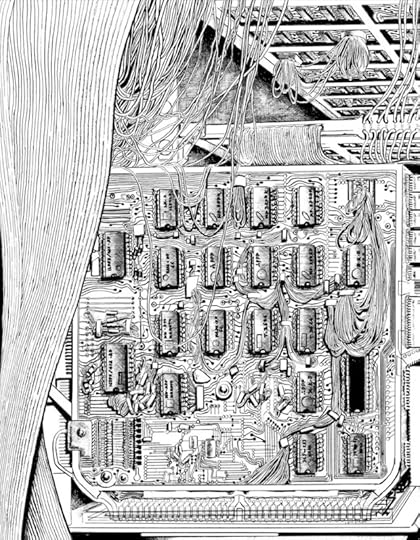
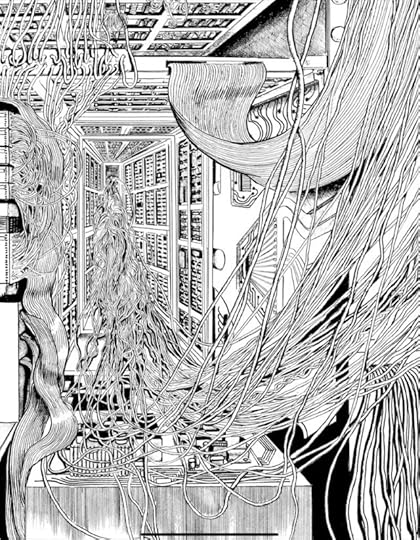
August 5, 2025
Five Apartments and a Mailbox
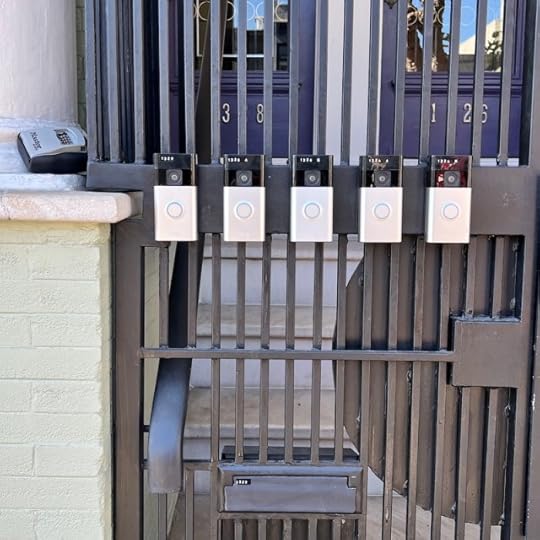
Another day, another doorbell, or set of doorbells. I like to think the Master Lock set-up on the left is for when the electric buttons fail. Bonus points for the one apartment that gets a mailbox.
August 4, 2025
Long Weekend
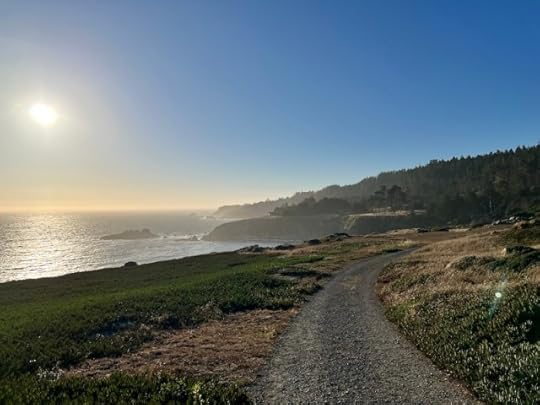
It was my birthday and I spent it up the coast. Back home now.
August 3, 2025
Bridge to Nowhere

I love impossible architecture. I love absurdist architecture. I love when both are explored in a classical form, as with this bridge at the Japanese Tea Garden in Golden Gate Park in San Francisco.
Also, the story behind it is sort of insane:

August 2, 2025
Scratch Pad: Noise, RSS, Conway
At the end of each week, I usually collate a lightly edited collection of recent comments I’ve made on social media, which I think of as my public scratch pad. I find knowing I’ll revisit my posts to be a positive and mellowing influence on my social media activity. I mostly hang out on Mastodon (at post.lurk.org/@disquiet), and I’m also trying out a few others. And I generally take weekends off social media.
▰ The problem isn’t the construction noise. The problem is that the construction noise sounds exactly like a giant dental drill.
▰ RSS 4 Life
▰ With great power … comes a lot of drop-down menus I get confused by and lose track of
▰ I love the front of the C.G. Jung building on Mission in San Francisco, and not just because the tiles make me think of Conway’s Game of Life.
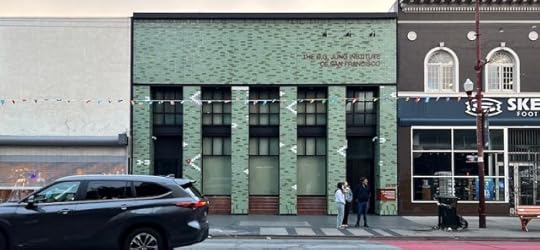
▰ Morning trio for street construction noise … — and who am I kidding? I can’t hear anything else.
▰ Synths!
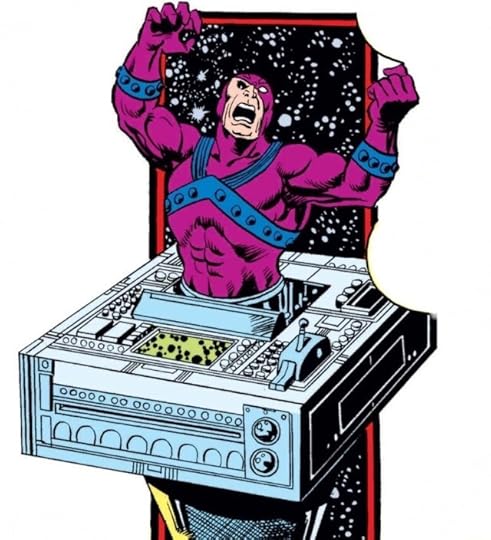
▰ Finished reading one novel and four graphic novels this week. The novel: Lightness by C. A. Higgins. The graphic novels — this is me getting back into the swing of things with my Marvel Unlimited subscription — were largely in the recent Ultimates line (Deniz Camp and Juan Frigeri’s Ultimates: Volume 1: Fix the World, Jonathan Hickman and Marco Checchetto’s Ultimate Spider-Man: Volume 1: Married with Children, and Peach Momoko’s Ultimate: X-Men: Fears and Hates), plus the start of Al Ewing and Martín Cóccolo’s run on Thor, Immortal Thor Vol. 1: All Weather Turns to Storm. And I’ve started trying out leagueofcomicgeeks.com as a way to track my comics reading. So far, so good.
August 1, 2025
Eduardo Miranda’s Quantum Explorations

The field is still somewhat new to me, despite how much I’ve read and continue to read about quantum computing, but on Thursday night I attended a performance and presentation at Gray Area here in San Francisco by Eduardo Miranda. Miranda is a professor of computer music at the University of Plymouth, and he is currently visiting as a fellow at Stochastic Labs, across the bay in Berkeley. He’s the editor of several related books, including Quantum Computing in the Arts and Humanities (Springer), Quantum Computer Music (Springer) and Advances in Quantum Computer Music (World Scientific).

At Gray Area, Miranda performed three works and then gave a brief talk about the use of quantum computing in the production of music, and took questions from the audience. I’m still wrapping my head around it, but a key distinguishing characteristic seems to be the unique nature of superposition in quantum physics, a topic explored in particular in Miranda’s piece Heisenberg’s Hammer, shown up at the top of this post.

He’s been involved in artificial intelligence in music since the mid-1990s, but says of the current state of the technology, during the ongoing boom, “It makes it easy to make music, but not to be creative.” He also expressed a concern that “big data averages everything and creates mediocrity,” and explained he is currently exploring “small data” as an alternate path.
In Miranda’s own description, the state of quantum computing today is equivalent to the age of punch cards in the overall development of computers. If I followed him correctly, then he expressed uncertainty, so to speak, that this particular path will even pay compositional dividends, but he’s continuing to see how far he can go with it.
July 31, 2025
Disquiet Junto Project 0709: Overclocked
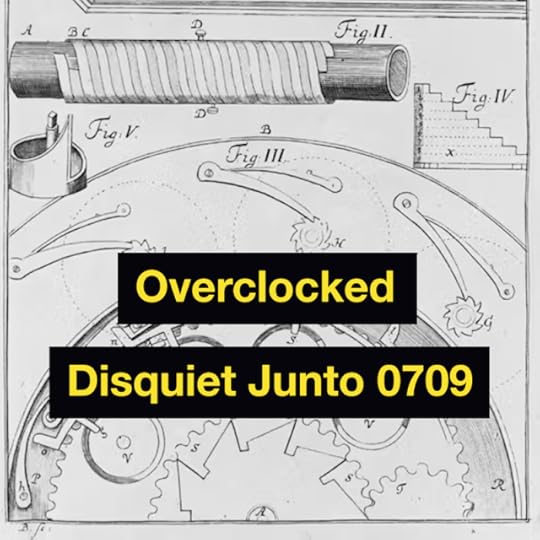
Each Thursday in the Disquiet Junto music community, a new compositional challenge is set before the group’s members, who then have five days to record and upload a track in response to the project instructions.
Membership in the Junto is open: just join and participate. (A SoundCloud account is helpful but not required.) There’s no pressure to do every project. The Junto is weekly so that you know it’s there, every Thursday through Monday, when your time and interest align.
Tracks are added to the SoundCloud playlist for the duration of the project. Additional (non-SoundCloud) tracks also generally appear in the lllllll.co discussion thread.
Disquiet Junto Project 0709: Overclocked
The Assignment: Speed up a machine (or process) until it falters.
Step 1: Think of a machine (or process) you use frequently.
Step 2: Push that machine (or process) by speeding it up, until it begins to break down.
Step 3: Record something making use of the sounds resulting from Step 2.
Tasks Upon Completion:
Label: Include “disquiet0709” (no spaces/quotes) in the name of your track.
Upload: Post your track to a public account (SoundCloud preferred but by no means required). It’s best to focus on one track, but if you post more than one, clarify which is the “main” rendition.
Share: Post your track and a description/explanation at https://llllllll.co/t/disquiet-junto-project-0709-overclocked/
Discuss: Listen to and comment on the other tracks.
Additional Details:
Length: The length is up to you. How fast can you go?
Deadline: Monday, August 4, 2025, 11:59pm (that is: just before midnight) wherever you are.
About: https://disquiet.com/junto/
Newsletter: https://juntoletter.disquiet.com/
License: It’s preferred (but not required) to set your track as downloadable and allowing for attributed remixing (i.e., an attribution Creative Commons license).
Please Include When Posting Your Track:
More on the 709th weekly Disquiet Junto project, Overclocked — The Assignment: Speed up a machine (or process) until it falters — at https://disquiet.com/0709/.



